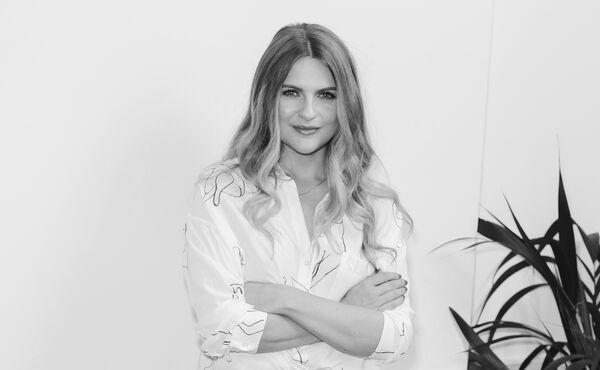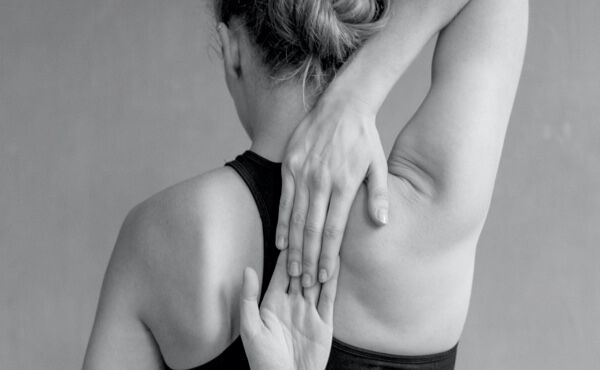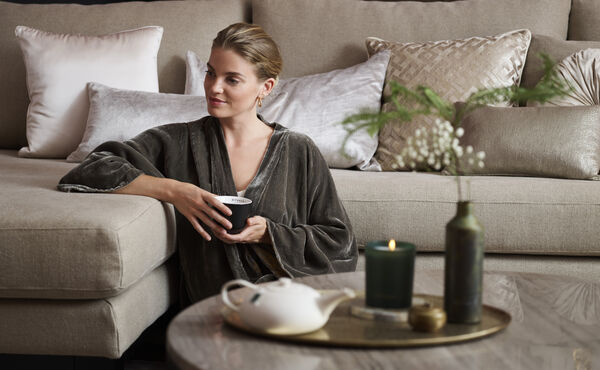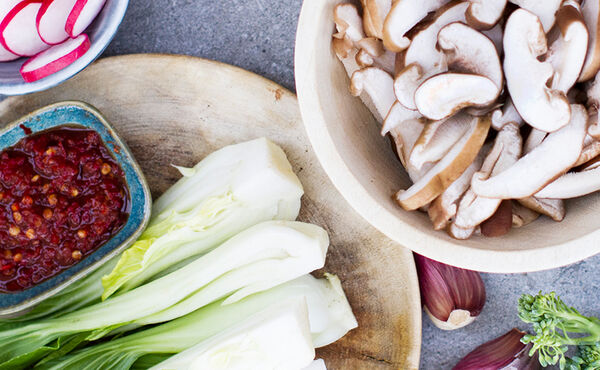Qigong (pronounced chee-gong) is thousands of years old and yet, recently, it has been trending on social media. Despite being a gentle form of movement, it has a surprising number of health benefits. Below we reveal everything you need to know about Qigong from its origin to its benefits, and why it’s the perfect workout to help you navigate the new season and beyond.
What is Qigong?
With roots in Chinese medicine, philosophy and martial arts, Qigong is a combination of gentle movement, good posture and breathing. It involves stretching and strengthening and also meditation.
“Qi” means vital or life energy and “gong” is often translated to work, so Qigong is generally seen as a holistic approach to improving and cultivating a healthy, vital energy. Energy that is within us but also energy we can harness from the universe around us.
There are two common categories of Qigong: Dynamic, active Qigong (dong gong) with flowing movements, then there is relaxing meditative Qigong (jing gong) with static positions and even more focus on the breath.
Where does Qigong come from?
Qigong is thousands of years old and pre-dates Tai Chi, which is believed to have been inspired by the ancient form of Qigong.
Many believe its roots stem back to China’s legendary first emperor Huang-Di, also known as The Yellow Emperor (2696–2598 BC). Since, there have been many different methods of Qigong from Confucius’s daily reflective life practice, to the modern-day Chinese Health Qigong Association’s (CHQA) health qigong that has been formalised and backed by science.
What are the benefits of Qigong?
Qigong is especially good for women, as bone loss is accelerated during menopause but Qigong has been found to help increase bone density. A 12-week study found that Baduanjin Qigong (a medical form of the exercise) prevented bone loss in middle aged women.
Qigong has also been linked to an immune boost. One study found that with 30-minutes of daily Qigong practice ‘significant immunological changes’ occurred in those that carried out the exercise compared with the control group. And, interestingly, another study found that after 5 months of Tai Chi and Qigong practice study participants’ response to the influenza vaccine was significantly improved, with the author noting ‘we found a significant increase in the magnitude and duration of the antibody response to influenza vaccine’.
Qigong is all about focus, flowing movements and breathing, and it seems this has the power to improve balance in a relatively short amount of time. One study found that Qigong significantly improved balance in women aged 18-25 with just an hour of Qigong twice per week for four weeks.
Parallels have often been drawn between Qigong and yoga and, like the yoga we know and many love, Qigong also has the power to reduce stress, which was proven by a study of the stress-relieving effect of Qigong on hospital workers. It has also been found to improve anxiety and even depression.

How does Qigong compare to Tai Chi and Yoga?
Qigong and Tai Chi are similar in the fact that most of the time you are stood up, carrying out fluid movements. Whereas yoga, born in India, takes place on a mat and involves movements that include static holds that can be physically challenging. But that doesn’t mean you can’t get stong doing Qigong, in fact it has historical roots to martial arts and, as we saw in the study above, it can improve both bone density and balance.
"I Tried Qigong and It’s Quite Incredible"
It’s a dark, rainy evening and the last thing I want to do is open my laptop for a zoom-based Qigong class. I’m done with screens. But John Tindle, a Qigong teacher in London, has invited me to join his class. I’m based in Amsterdam and, well, that's one amazing thing that has come out of lockdown - we are more connected than ever, that I can join a workout happening in another country from my living room when the gyms nearby are closed.
John starts the session by getting us to slightly bend our knees and shake our bodies up and down. Once we’re warm, we start floating our hands over our body, reaching up past our heart chakra, extending our hands to the sky, before floating them down our back and legs whilst bending towards the ground. He talks about drawing the chi energy in from the infinite universe, into our bodies and back down to the ground. I feel a tingling in my hands, Qigong is all about the transfer of energy and, as we repeat the movement together but at our own pace for 40 minutes, I forget that there is a laptop in front of me and I get lost in a sort of meditative flow. Towards the end, John gets us to imagine a bright light flowing in from the universe and through our outstretched palms. While the movements weren’t strenuous, I can see how, with time, strength and balance would improve.
After the class, I feel a sense of calm and true relaxation—for the first time in weeks I sleep soundly. Next day, I wake up feeling hopeful and more energised than I have in a long time. For anyone who finds switching off from modern life or sitting still whilst meditating hard, joining a Qigong session could be the shakeup you need.
Check out this handy guide to finding a Qigong teacher, look at Chinese Heritage’s directory of instructors or why not reach out to John and try one of his online sessions?







